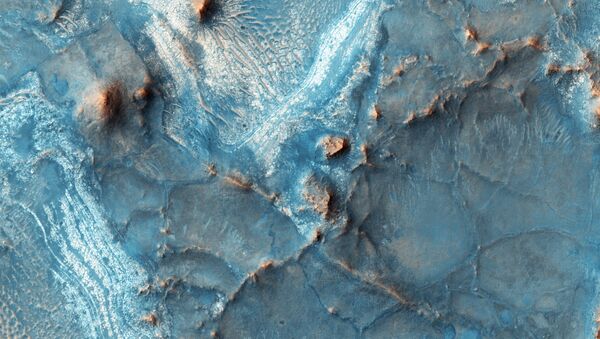The composition of the rocks is also very diverse, the geology history of the Nili Fossae region is complicated and interesting, structures, including layered bedrock and other compositions have also formed.
The beautiful pictures was captured by the High Resolution Imaging Science Experiment (HiRISE) camera on NASA's Mars Reconnaissance Orbiter, on February 5, 2016.
"Nili Fossae Trough is a huge crack in the surface of Mars. The linear trough is about 25 kilometers (16 miles) wide. It formed when a huge meteor slammed into the surface and created the Isidis Basin to the east, one of the four largest impact basins on Mars. The impact caused the Martian surface to deform. The region has one of the largest, most diverse exposures of clay minerals," a spokesperson for NASA explained.
"The Mars Science Laboratory rover would land in the center of the trough, amid rocks that splattered outward when the crater formed. Volcanic rocks are also abundant, left behind by cooling lava that filled the trough. Over its mission, the rover would drive westward to a side canyon in the wall of the trough. There, spacecraft have detected a diversity of minerals in the ancient crust."




